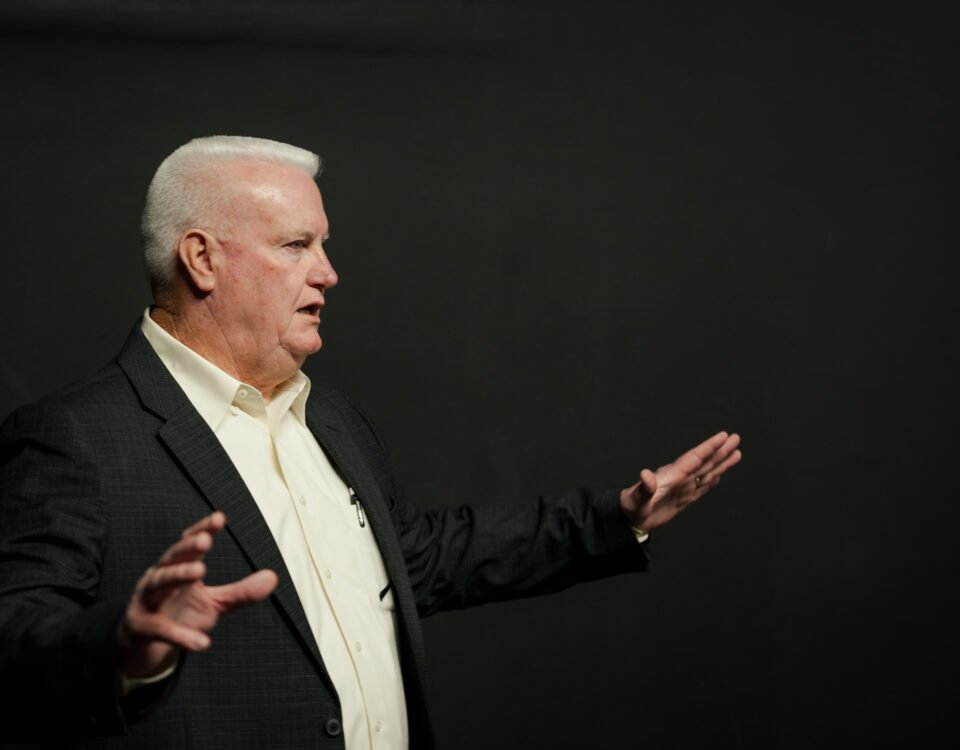February 20, 2024

Retired Army colonel joins U.S. House District 25 race
January 15, 2024
What if We Could Secure Our Nation’s Borders While Upholding Humanitarian Values: A Conservative Approach to Legal Immigration
January 22, 2024
Retired Army colonel joins U.S. House District 25 race
January 15, 2024
What if We Could Secure Our Nation’s Borders While Upholding Humanitarian Values: A Conservative Approach to Legal Immigration
January 22, 2024Prioritizing Home: A Shift in Foreign Aid Spending
The allocation of the United States’ foreign aid budget has long been a topic of debate, with arguments frequently surfacing about the possible redirection of these funds towards domestic issues. Notably, the considerable financial support provided to various countries, including recent aid to Ukraine amidst its conflict with Russia, has sparked conversations about whether these billions could better serve the pressing needs within our own communities. This discussion centers on the hypothesis of reallocating substantial portions of the foreign aid budget to vital sectors such as education, healthcare, infrastructure, and job creation, positing that such a shift in focus could yield significant improvements in American societal well-being.
As advocates of this reallocation suggest, the investment in education could cultivate a more skilled workforce, thereby boosting the nation’s global competitiveness. Enhanced healthcare could lead to a healthier population with improved productivity and lower medical costs over time. The modernization of infrastructure would not only create jobs but also lay the foundation for sustained economic growth. Furthermore, this redirection could catalyze the creation of a wide spectrum of employment opportunities, addressing unemployment and underemployment issues in numerous localities. The core argument revolves around the belief that strengthening the nation’s own foundational aspects can, in turn, create a more robust and self-reliant society capable of providing international aid without neglecting domestic necessities.
Key Takeaways
Reallocating foreign aid to domestic issues is a significant point of debate.
Investing in domestic sectors could potentially enhance societal well-being.
Strengthening internal foundations may lead to a more self-reliant society.
Rationale for Redirection
The reallocation of the United States’ foreign aid budget is rooted in the pursuit of addressing immediate domestic concerns, such as education, healthcare, infrastructure, and job creation. This section explores why redirecting funds is viewed as beneficial for national interests and probes the effectiveness of current foreign aid expenditures.
National Priorities and Domestic Needs
The United States often allocates substantial resources to foreign aid, yet several domestic sectors are facing critical underfunding. By shifting portions of the foreign aid budget, these funds could alleviate some of the pressing issues within the nation’s borders. For instance, the redirection towards education can result in better-equipped schools, more training for teachers, and reduced student-teacher ratios. In healthcare, reallocation may translate into improved access to medical services, particularly for underprivileged communities, and a stronger response to public health crises. Investing in infrastructure promises to modernize aging transport and utility systems, thereby bolstering economic efficiency and public safety. Lastly, funding job creation initiatives can lead to greater employment rates and support economic revitalization, especially in areas suffering from industrial decline.
Efficacy of Foreign Aid Spending
The effectiveness of current foreign aid spending is a subject of scrutiny. While it’s undoubtedly vital for promoting international development and diplomatic relationships, questions arise concerning its direct impact. For example, some argue that foreign aid may not always reach its intended targets due to corruption or mismanagement. Additionally, there is a debate on whether these funds could catalyze more significant benefits if they were invested domestically. By ensuring that foreign aid is utilized in regions and projects where success has been tangibly demonstrated, such as specific programs promoting evidence-based approaches, the efficacy can be improved. This assessment aids in the decision-making process as to whether foreign aid funds could serve more immediate and measurable domestic goals.
Investment in Education
Redirecting funds from foreign aid towards domestic education initiatives can lead to significant improvements within our communities. By investing in both public education and vocational training programs, resources can be more effectively utilized to enhance skill sets and foster a better-prepared workforce.
Strengthening Public Education
Public education serves as the cornerstone of community development and economic stability. Financial resources can be allocated to address critical areas such as reducing class sizes, updating educational infrastructure, and enhancing technology in classrooms. According to the Economic Policy Institute, equitable funding is crucial, especially for students from low-income families who often face disparities in educational resources.
Key Investments:
Hire more qualified teachers
Modernize classroom facilities
Improve student access to digital tools
Expanding Technical and Vocational Training
There is a growing demand for skilled labor in the modern economy, and technical and vocational training programs offer direct pathways to fulfilling these roles. Investments in this sector could support a diverse range of programs tailored to match current job market demands, from traditional trades to high-tech industries. For instance, additional funding could significantly improve the infrastructure and resources for community colleges, as noted in a report on the $2 trillion infrastructure plan for higher ed.
Specialized Areas:
Healthcare technicians
IT and cybersecurity
Advanced manufacturing and engineering
By thoughtfully redirecting a portion of foreign aid funds to educational advancement, the long-term benefits include a more educated populace, a reduction in unemployment rates through skill-specific training, and the reinforcement of economic growth and stability.
Improvements in Healthcare
Redirecting funds from the foreign aid budget could substantially enhance America’s ability to address systemic health challenges and fortify its healthcare infrastructure.
Addressing Domestic Health Disparities
The reallocation of foreign aid towards improving healthcare begins with tackling the persistent racial and economic health disparities within the country. Investing in programs that focus on prevention not only treating sickness, but also ensuring equitable access to services for all communities, can transform health outcomes at a systemic level. Research suggests that such initiatives could decrease the cost of medical care long-term by reducing the incidence of chronic diseases that disproportionately affect minority groups.
Boosting Public Health Infrastructure
Investment in public health infrastructure is critical to prepare for future health crises. Funds could go towards enhancing state and local health departments’ capabilities, expanding telehealth services, and upgrading health IT systems for better data sharing and surveillance. By equipping health systems with the latest technology and adequate resources, they become more resilient and responsive to the needs of the population.
Infrastructure Development
Redirecting funds from the foreign aid budget could significantly enhance the nation’s infrastructure, a critical component for economic growth and public welfare. Investment in this area tends to yield immediate and long-term benefits.
Renovation of Transportation Systems
Revitalizing transportation infrastructure is a cornerstone of strengthening the US economy. By diverting foreign aid to these efforts, the country could address the pressing issues surrounding aging roads and bridges. Implementing projects such as the reconstruction of the interstate highway system would not only improve safety but also facilitate efficient travel and trade across states.
Key aspects include:
Roads and Highways: Repairing surfaces, expanding lanes
Bridges: Upgrading load capacity, retrofitting for earthquake resilience
Upgrading Digital Networks
Enhancing digital infrastructure is just as vital. With a reallocation of funds, broadband networks can be extended to underserved areas, emphasizing the importance of access to high-speed internet as a facilitator for education, healthcare, and business.
Areas to consider:
Rural Broadband: Deploying fiber-optic cables to remote locations
5G Networks: Expanding coverage, improving speeds, and reducing latency for urban and suburban areas
Strategic investments in both transportation and digital networks are not only about repairing the old but also paving the way for future technologies and advancement.
Job Creation
Redirecting funds from the foreign aid budget towards domestic job creation presents a significant opportunity for bolstering the American economy. By focusing on practical avenues that offer extensive employment opportunities, we can fortify the job market from the ground up.
Supporting Small and Mid-Sized Enterprises (SMEs)
Small and mid-sized enterprises (SMEs) are the lifeblood of the American economy, representing about 99.9% of U.S. businesses. Redirecting foreign aid funds can empower these businesses with essential resources, including interest-free loans, grants, and tax incentives, to stimulate growth and job creation. Investments in digital capabilities and training can further modernize these businesses, enhancing their competitiveness both domestically and globally.
Diversifying into Energy Independence
While renewable energy is a part of the broader energy discussion, a balanced approach that includes diverse sources is crucial. Investing in the energy sector should not solely focus on solar and wind but also consider the expansion and modernization of traditional energy sources like natural gas, oil, and nuclear power, which are pivotal for energy independence and economic stability. Such a diversified energy strategy ensures a robust market for high-skilled jobs across various segments – from engineering and installation to maintenance and manufacturing. This approach not only addresses energy needs but also fosters a dynamic and sustainable job market.
Conclusion
In reconsidering the allocation of the foreign aid budget, particularly funds directed to corruption-prone areas overseas, it’s crucial to weigh the benefits of investing these resources in our own communities. The immediate and long-term impacts of such a shift could significantly enhance the nation’s welfare.
Investing in our domestic foundations—education, healthcare, infrastructure, and employment—could yield transformative results. Enhanced educational systems can produce a more skilled workforce, leading to economic dynamism. Revitalizing healthcare can improve the nation’s health and longevity. Upgrading infrastructure is not only about economic growth but also about ensuring the safety and efficiency of our daily lives. Moreover, fostering job creation is key to building a resilient and robust economy.
The debate around foreign aid is complex. While international assistance is crucial for global stability and maintaining diplomatic ties, there is growing concern about corruption and inefficiencies in how these funds are utilized abroad. Supporters of reducing foreign aid argue that strengthening our domestic capabilities provides a more stable base for foreign engagement. This approach does not dismiss the importance of international aid but rather emphasizes a more balanced, strategic allocation of resources.
The decision to redirect foreign aid funds necessitates careful consideration, balancing the benefits of domestic investment against the moral and strategic obligations of international support. A comprehensive evaluation is needed to ensure that such financial shifts align with the nation’s best interests, while still upholding global commitments and fostering positive international relationships.
Frequently Asked Questions
This section addresses common inquiries regarding the prospective reallocation of foreign aid funds toward domestic priorities, examining the implications for various sectors within the United States.
How could reallocating funds from foreign aid to domestic education initiatives potentially benefit our country’s global competitiveness?
Redirecting funds to education could enhance skill sets and innovation, leading to more robust participation in the global economy. This could fortify the U.S. position in technology, science, and other industries critical for international leadership.
What are the potential impacts on public health if more of the US foreign aid budget was invested into healthcare systems within the United States?
Investment in the U.S. healthcare system could lead to improved public health outcomes, wider access to medical resources, and reduce long-term healthcare costs, reinforcing the overall health and productivity of the American population.
In what ways might the redirection of foreign aid towards domestic infrastructure development enhance economic growth and efficiency?
Focusing foreign aid on infrastructure could modernize transportation, energy, and communication systems. This improvement could spur economic growth by making commerce more efficient and attracting domestic and international businesses.
What could be the long-term economic effects of investing foreign aid money into job creation programs domestically?
Channeling funds into job creation may result in sustained employment growth, bolster consumer spending, and stimulate aggregate demand. It could also address structural unemployment, uplifting communities with persistent job scarcity.
How might the reduction of foreign aid and the subsequent investment in national issues affect geopolitical relationships and global stability?
Reducing foreign aid could alter current alliances and geopolitical dynamics, potentially leading to shifts in global influence. It might also prompt other nations to reassess their foreign aid policies but could lead to reduced U.S. influence abroad.


